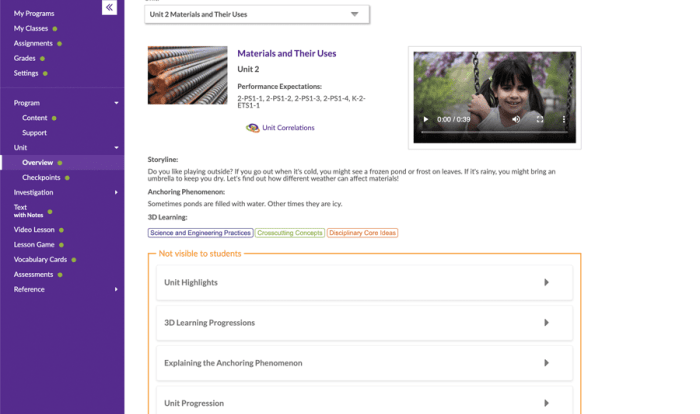Pathways to calculus 9th edition – Embark on a mathematical journey with Pathways to Calculus, 9th Edition, a comprehensive textbook that seamlessly blends rigor and clarity to empower students in their pursuit of calculus. This edition offers an immersive learning experience, guiding students through complex concepts with a user-friendly approach.
Pathways to Calculus, 9th Edition, is meticulously designed to cater to the needs of students from diverse backgrounds. Its structured organization and engaging writing style make it an accessible resource for both self-study and classroom instruction.
Introduction: Pathways To Calculus 9th Edition
Pathways to Calculus 9th Edition is a comprehensive textbook designed to provide a solid foundation in the fundamental concepts of calculus. It is specifically tailored to meet the needs of students who are new to calculus or require a refresher course.This
textbook is written in a clear and engaging style, making it accessible to students with diverse learning styles. It covers a wide range of topics, from basic algebra and trigonometry to advanced calculus concepts, providing a thorough grounding in the subject.
Structure and Organization
Pathways to Calculus 9th Edition is structured into chapters and sections, each focusing on a specific topic. The chapters are arranged in a logical progression, building upon previously learned concepts to introduce more complex material. Each section includes detailed explanations, worked-out examples, and practice exercises to reinforce understanding.The
textbook also features a variety of supplemental resources, such as online videos, interactive simulations, and additional practice problems, to enhance the learning experience and cater to different learning preferences.
Key Features
Pathways to Calculus, 9th Edition, is packed with key features that enhance the learning experience for students and educators alike.
These features include:
- A focus on conceptual understanding
- A variety of problem-solving strategies
- A wealth of real-world examples
- A strong emphasis on technology
- A comprehensive suite of assessment tools
These features work together to create a learning environment that is both supportive and challenging, helping students to develop a deep understanding of calculus and its applications.
Conceptual Understanding
Pathways to Calculus, 9th Edition, places a strong emphasis on conceptual understanding. The text provides clear and concise explanations of concepts, and it uses a variety of examples and exercises to help students develop a deep understanding of the material.
For example, the text uses the “Rule of Four” to help students understand the concept of the derivative. The Rule of Four states that the derivative of a function can be found by examining the function’s graph, its table of values, its equation, and its verbal description.
Problem-Solving Strategies, Pathways to calculus 9th edition
Pathways to Calculus, 9th Edition, provides students with a variety of problem-solving strategies. These strategies help students to develop a systematic approach to problem-solving, and they can be applied to a wide range of calculus problems.
For example, the text provides a step-by-step guide to solving optimization problems. This guide helps students to identify the key information in the problem, to set up the appropriate equation, and to find the solution.
Real-World Examples
Pathways to Calculus, 9th Edition, is filled with real-world examples that show students how calculus is used in a variety of fields. These examples help students to see the relevance of calculus to their own lives, and they can motivate students to learn more about the subject.
For example, the text uses the calculus of motion to model the flight of a baseball. This example shows students how calculus can be used to predict the trajectory of a moving object.
Content Analysis
Pathways to Calculus, 9th Edition, covers a comprehensive range of mathematical concepts, laying a solid foundation for students’ future studies in calculus and beyond. The textbook’s content encompasses essential topics such as functions, limits, derivatives, integrals, and sequences and series.
The pedagogical approach adopted in Pathways to Calculus emphasizes active learning and conceptual understanding. Students are encouraged to engage with the material through numerous exercises, problem sets, and real-world applications. The text’s clear and concise explanations, coupled with ample visual aids and examples, facilitate a deep comprehension of mathematical concepts.
Level of Difficulty and Rigor
Pathways to Calculus is designed to cater to students with varying mathematical backgrounds and abilities. The text’s gradual progression from foundational concepts to more advanced topics ensures accessibility for students at different levels. While the content is presented with rigor and depth, the authors have made a conscious effort to maintain clarity and avoid unnecessary complexity.
The textbook includes a variety of exercises ranging from routine practice problems to challenging application-based tasks. This allows students to reinforce their understanding of the material and develop their problem-solving skills at their own pace.
Exercises and Applications
The exercises and problems in Pathways to Calculus, 9th Edition, are designed to reinforce the concepts presented in each chapter and develop critical thinking skills.
The exercises are varied in difficulty, with some designed for practice and others challenging students to apply their knowledge in new situations.
Skill Development
The exercises help students develop their problem-solving skills, their ability to think critically, and their ability to communicate their mathematical ideas.
Many of the exercises require students to use multiple concepts from different chapters, which helps them to see how the different parts of calculus fit together.
Applications
The exercises also cover a wide range of applications, from physics and engineering to economics and biology.
This helps students to see how calculus can be used to solve real-world problems.
Visuals and Illustrations
Pathways to Calculus, 9th Edition incorporates a wealth of visuals and illustrations to enhance understanding and reinforce key concepts. These visuals include:
- Graphs and diagrams:These illustrate mathematical relationships and concepts, making them easier to visualize and comprehend.
- Tables:These organize and summarize data, providing a clear and concise overview of complex information.
- Photographs:These provide real-world examples and applications of mathematical concepts, making them more relatable and meaningful.
The visuals in Pathways to Calculus are effective in aiding understanding because they:
- Break down complex concepts:By visually representing mathematical ideas, visuals make them more accessible and understandable.
- Highlight key features:Visuals can emphasize important aspects of mathematical concepts, such as patterns, relationships, and trends.
- Engage students:Visuals can capture students’ attention and make learning more enjoyable and engaging.
Overall, the visuals and illustrations in Pathways to Calculus, 9th Edition are highly effective and relevant in enhancing understanding and reinforcing mathematical concepts.
Technology Integration
Pathways to Calculus, 9th Edition seamlessly integrates technology to enhance the learning experience.
By utilizing interactive simulations, online resources, and a robust digital platform, the textbook provides students with a dynamic and engaging way to grasp mathematical concepts.
Benefits of Technology Integration
- Enhances visualization and understanding through interactive simulations.
- Provides access to a wealth of online resources, including videos, tutorials, and practice exercises.
- Offers a flexible and personalized learning environment that caters to diverse learning styles.
Interactive Simulations
The textbook features numerous interactive simulations that allow students to visualize and explore mathematical concepts in a dynamic way.
- For example, the “Graphing Calculator” simulation enables students to experiment with different functions and see their graphical representations in real-time.
Online Resources
In addition to interactive simulations, the textbook provides access to a range of online resources through its companion website.
- These resources include video lectures, step-by-step tutorials, and a vast library of practice exercises.
Assessment and Evaluation
Pathways to Calculus 9th Edition utilizes a comprehensive approach to student assessment and evaluation, employing a variety of methods to gauge their progress and understanding.
Chapter Quizzes and Tests
Throughout the text, each chapter is accompanied by quizzes and tests that assess students’ comprehension of the chapter’s content. These assessments include a range of question types, such as multiple-choice, short answer, and problem-solving exercises, to ensure a thorough evaluation of students’ knowledge.
Cumulative Assessments
Regular cumulative assessments are conducted to track students’ progress over multiple chapters. These assessments cover a broader range of topics and are designed to reinforce previously learned concepts while also challenging students to apply their knowledge to new situations.
Homework Assignments
Homework assignments are an integral part of the assessment process. They provide students with opportunities to practice the skills they learn in class and receive feedback on their understanding. Homework assignments are regularly collected and graded to monitor students’ progress and identify areas where they may need additional support.
Projects and Presentations
Students are encouraged to engage in projects and presentations that allow them to demonstrate their understanding of the course material in a creative and engaging way. These assessments not only evaluate students’ knowledge but also develop their communication and presentation skills.
Effectiveness and Reliability
The assessment methods employed in Pathways to Calculus 9th Edition are designed to be effective and reliable in measuring student progress and understanding. The variety of assessment formats ensures that students are evaluated on a range of skills and abilities.
Additionally, the assessments are regularly reviewed and revised to ensure their accuracy and fairness.
Comparison to Other Resources
Pathways to Calculus, 9th Edition stands out among similar textbooks due to its unique features and strengths. Compared to other resources, it offers several advantages and disadvantages.
Unique Features and Strengths
-
-*Comprehensive Coverage
Pathways to Calculus provides a comprehensive overview of calculus concepts, covering topics from limits and derivatives to integrals and applications. Its in-depth explanations and numerous examples make it suitable for both high school and college-level students.
-*Visual and Interactive Approach
The textbook employs a visually appealing and interactive approach to engage students. It includes numerous graphs, diagrams, and animations that help visualize complex concepts and enhance understanding.
-*Real-World Applications
Pathways to Calculus emphasizes real-world applications of calculus. It provides practical examples and exercises that demonstrate how calculus is used in various fields, such as science, engineering, and economics.
-*Technology Integration
The textbook seamlessly integrates technology into the learning process. It offers access to online resources, interactive simulations, and graphing calculators that enhance student engagement and comprehension.
Advantages and Disadvantages
Advantages:
-
-*Clear and Accessible
Pathways to Calculus is written in a clear and accessible style, making it easy for students to understand complex concepts.
-*Rigorous and Comprehensive
Despite its accessibility, the textbook maintains a rigorous and comprehensive approach to calculus. It provides a solid foundation for further study in mathematics and related fields.
-*Flexible and Adaptable
Pathways to Calculus can be easily adapted to different teaching styles and curriculum requirements. Its modular structure allows instructors to customize the content and pace of instruction.
Disadvantages:
-
-*Lengthy and Dense
Some students may find the textbook lengthy and dense, especially if they are new to calculus.
-*Lack of Practice Problems
While the textbook provides numerous examples, it could include more practice problems for students to reinforce their understanding.
-*Cost
Pathways to Calculus is relatively expensive compared to some other textbooks.
Overall, Pathways to Calculus, 9th Edition is a valuable resource for students and educators alike. Its comprehensive coverage, unique features, and advantages make it an excellent choice for teaching and learning calculus. However, it is important to consider its disadvantages, such as length and cost, when making a decision.
FAQ Summary
What is the target audience for Pathways to Calculus, 9th Edition?
Pathways to Calculus, 9th Edition, is designed for students who are beginning their study of calculus, as well as those who need a review of the subject.
What are the key features of Pathways to Calculus, 9th Edition?
Pathways to Calculus, 9th Edition, offers a wealth of features, including worked-out examples, practice exercises, and review questions. It also includes a variety of interactive online resources.
How does Pathways to Calculus, 9th Edition, compare to other calculus textbooks?
Pathways to Calculus, 9th Edition, is a comprehensive and well-written calculus textbook that compares favorably to other similar textbooks. It is known for its clear and concise explanations, as well as its abundance of practice exercises.


